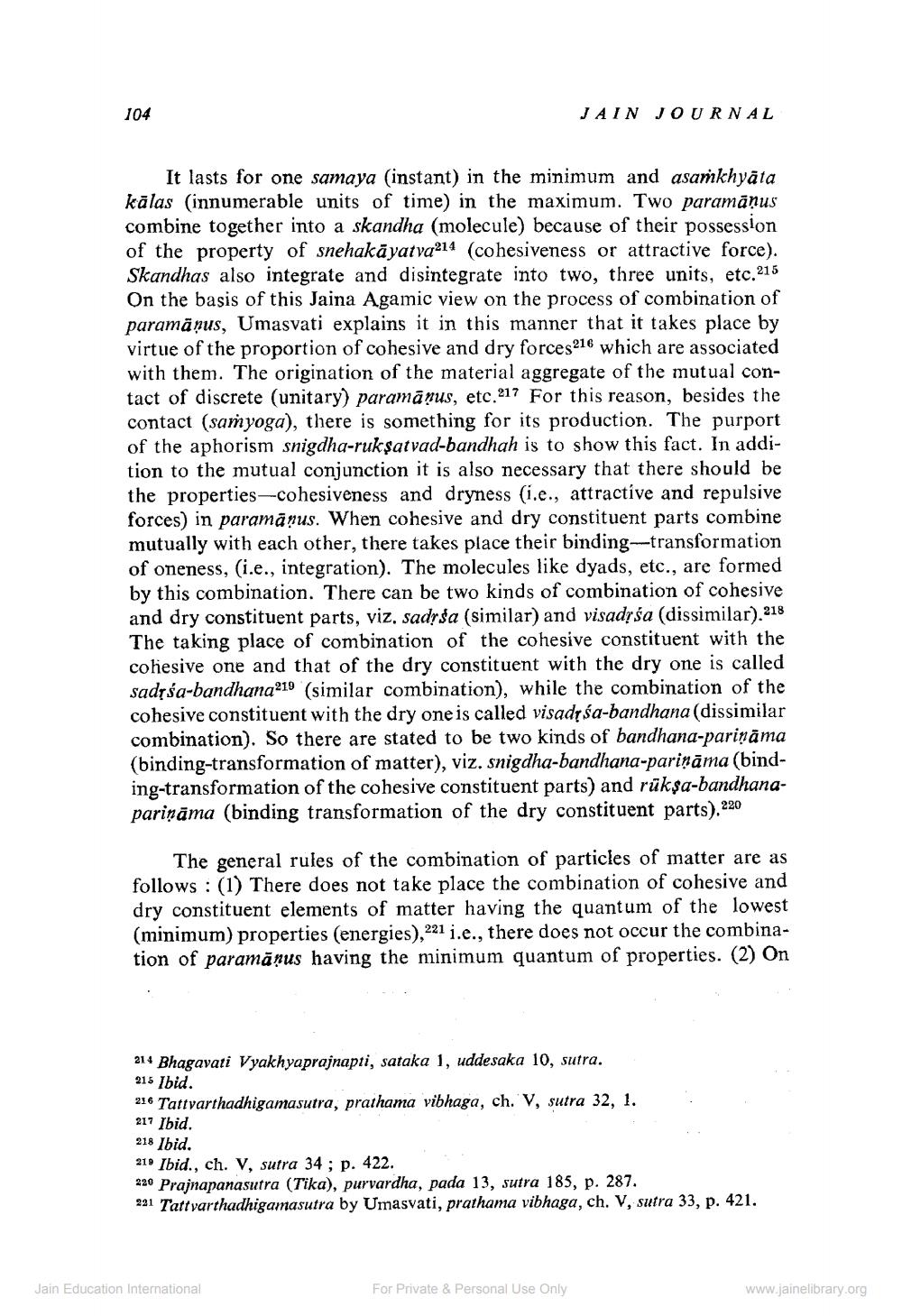________________
104
JAIN JOURNAL
It lasts for one samaya (instant) in the minimum and asamkhyāta kālas innumerable units of time) in the maximum. Two paramāņus combine together into a skandha (molecule) because of their possession of the property of snehakāyatva214 (cohesiveness or attractive force). Skandhas also integrate and disintegrate into two, three units, etc. 215 On the basis of this Jaina Agamic view on the process of combination of paramāņus, Umasvati explains it in this manner that it takes place by virtue of the proportion of cohesive and dry forces 216 which are associated with them. The origination of the material aggregate of the mutual contact of discrete (unitary) paramānus, etc. 217 For this reason, besides the contact (samyoga), there is something for its production. The purport of the aphorism snigdha-ruksatvad-bandhah is to show this fact. In addition to the mutual conjunction it is also necessary that there should be the properties-cohesiveness and dryness (i.e., attractive and repulsive forces) in paramāņus. When cohesive and dry constituent parts combine mutually with each other, there takes place their binding-transformation of oneness, (i.e., integration). The molecules like dyads, etc., are formed by this combination. There can be two kinds of combination of cohesive and dry constituent parts, viz, sadrsa (similar) and visadrśa (dissimilar).218 The taking place of combination of the cohesive constituent with the cohesive one and that of the dry constituent with the dry one is called sadīša-bandhana219 (similar combination), while the combination of the cohesive constituent with the dry one is called visadrsa-bandhana (dissimilar combination). So there are stated to be two kinds of bandhana-parināma (binding-transformation of matter), viz. snigdha-bandhana-parināma (binding-transformation of the cohesive constituent parts) and rük$a-bandhanaparināma (binding transformation of the dry constituent parts).220
The general rules of the combination of particles of matter are as follows : (1) There does not take place the combination of cohesive and dry constituent elements of matter having the quantum of the lowest (minimum) properties (energies),221 i.e., there does not occur the combination of paramānus having the minimum quantum of properties. (2) On
214 Bhagavati Vyakhyaprajnapti, sataka 1, uddesaka 10, sutra. 215 Ibid. 236 Tattvarthadhigamasutra, prathama vibhaga, ch. V, sutra 32, 1. 217 Ibid. 218 lbid. 21. Ibid., ch. V, sutra 34; p. 422. 220 Prajnapanasutra (Tika), purvardha, pada 13, sutra 185, p. 287. 221 Tattvarthadhigamasutra by Umasvati, prathama vibhaga, ch. V, sutra 33, p. 421.
Jain Education International
For Private & Personal Use Only
www.jainelibrary.org




